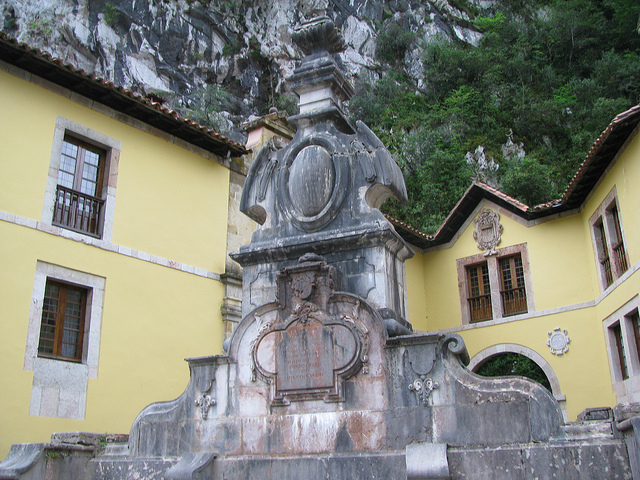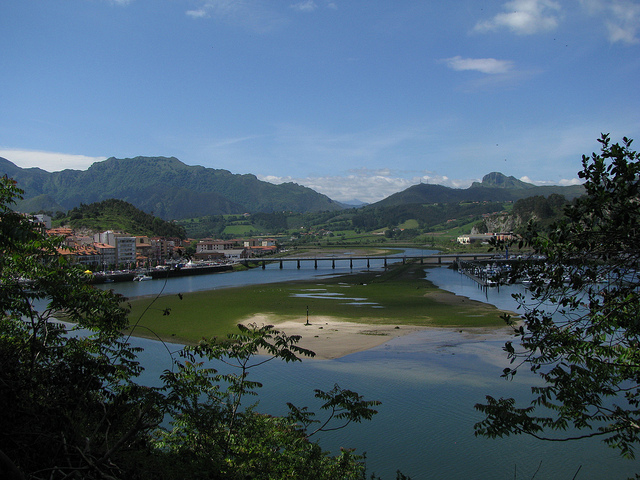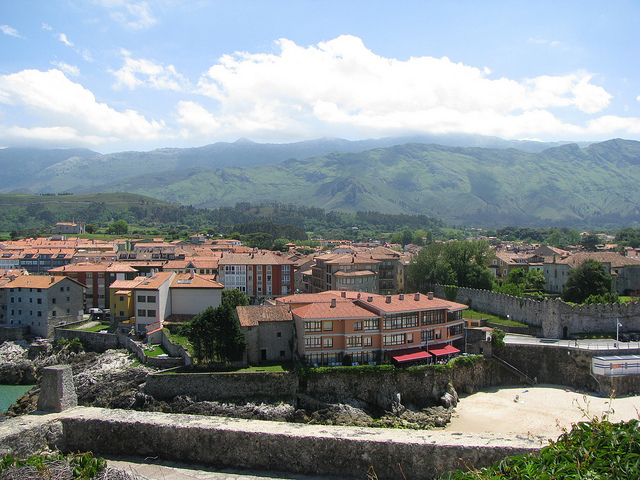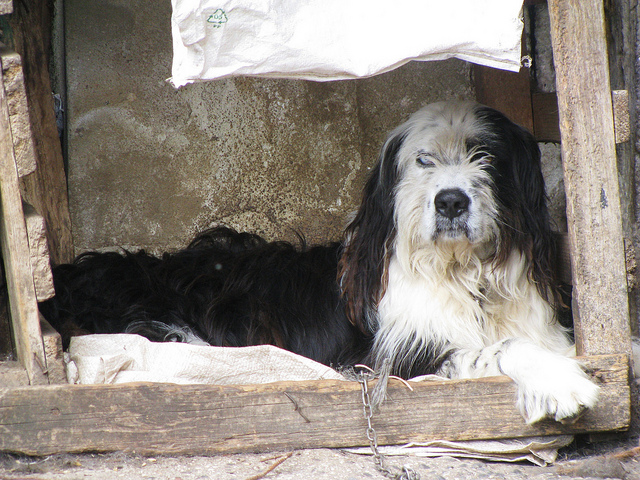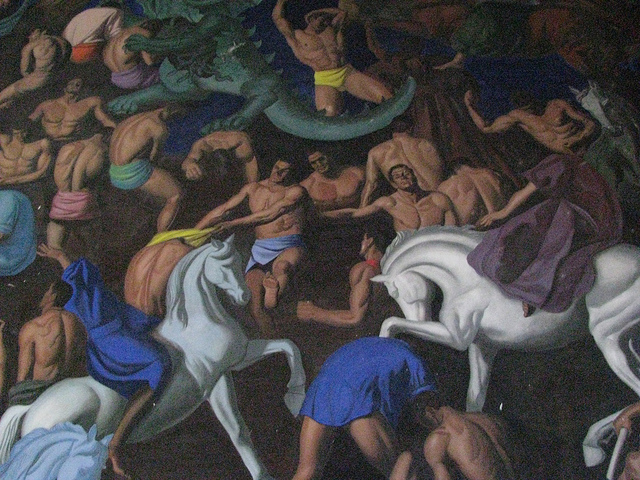Covadonga played an important role as the site of the Battle of Covadonga which the Iberian Christians won over the occupying Moors in 722 AD. This event started the Reconquest, a 770 year endeavour to expel the Moors from Spain. The village is anchored by the Lady of Covadonga, a shrine dedicated to the Virgin Mary who was believed to have miraculously aided the Christians in their fight against the Moors. It is said that Don Pelayo, who led the Christian forces, retreated to a cave in the remote mountains of Asturias where a hermit had hidden away a statue of the Virgin Mary. He prayed to the Virgin for victory, and with Mary’s help Don Pelayo’s troops were successful in vanquishing the Moorish conquerors.

The impressive Basilica of Covadonga
A shrine was dedicated to this miracle but it was destroyed by fire in 1777. The shrine was eventually replaced by a huge Basilica that was consecrated in 1901 after 24 years of construction. Built entirely of pink limestone, this impressive church now holds the current statue of Our Lady of Covadonga, which dates to the 16h century. Embedded within the steep mountains, Covadonga is a phenomenal site and I counted myself lucky to visit during low season because this village definitely teems with busloads of tourists during the busy summer months.

Local souvenirs in Covadonga
The walk up a winding road from the car park was pretty interesting in itself. I walked past a series of souvenir stalls, which sell religious gift and local mementos. Two large stone carved lions flank the entrance to the walk up to the Holy Cave which holds the tomb of Don Pelayo. The Museo of Covadonga explains the history of this significant location and the 4-star Gran Hotel Pelayo offers luxurious accommodation right next to this sacred place. The courtyard in front of the basilica houses the chapter house, and a bronze statue of Don Pelayo.

Don Pelayo and his troops won a crucial battle against the Moors
After leaving the most visited monument in Asturias, I continued my drive up the mountains. The western massif of the Picos de Europa was declared a National Park in 1918, the first national park in Spain and it was expanded in 1995 to include an even larger part of this mountain range that spans the Spanish provinces of Asturias, Cantabria and León. Due to its unique fauna and flora, it is also a designated UNESCO Biosphere Reserve. This area is unique because it represents the northern limit of many Mediterranean animal species, and the southern limit of many species native to northern Europe. Indigenous species include the Cantabrian capercaille, the Cantabrian brown bear, the Cantabrian chamois, the grey partridge, the Iberian wolf, and various birds of prey.

The imposing stone interior of the Basilica of Covadonga
I wanted to head to two glacial mountain lakes, Lake Ercina and Lake Enol, but as I ascended the mountain I was surrounded by thick fog and drizzle. Even if I had made it to the top I would have absolutely had no view, which was a big disappointment. The vista from the Lagos de Covadonga is supposed to be stunning, but it was not to be today. I did, however, find out that the road I was driving on is part of the famous Vuelta de España, the Spanish equivalent of the Tour de France. The Lagos de Covadonga section is the most important climb of this professional bicycle race. With its length of 12.6 kilometers and its 7.3% average incline, it represents the most demanding section of the entire race. One 800 meter section of this road even features a 15% incline!

The Holy Cave of Covadonga – Santa Cueva
Frustrated by the weather, the lack of visibility and chilled to the bone I made my way back to the Hotel La Cepada to relax and warm up for a few hours in my comfortable room. In the evening I decided to stay in and explore the cuisine in the onsite restaurant called El Cenador de los Canónigos. Even the Prince of Asturias and his wife have enjoyed a meal here at the Hotel La Cepada!

The restaurant at Hotel La Cepada
Elena, one of the hotel employees, gave me a brief tour of the hotel and welcomed me warmly to the restaurant. I asked for her recommendation and she suggested that I try “merluza con patatas”, a delicious grilled hake with fresh potatoes.

My dinner, with fresh local ingredients
For dessert I splurged on a millefeuille with hazelnut ice cream and enjoyed the night-time view over Cangas de Onís. Hoping that the weather would be better tomorrow for my activities in the Picos de Europa, I retreated to my room and enjoyed a bit of Spanish television before resting up for a busy day.

Comfortable bedroom at La Cepada
